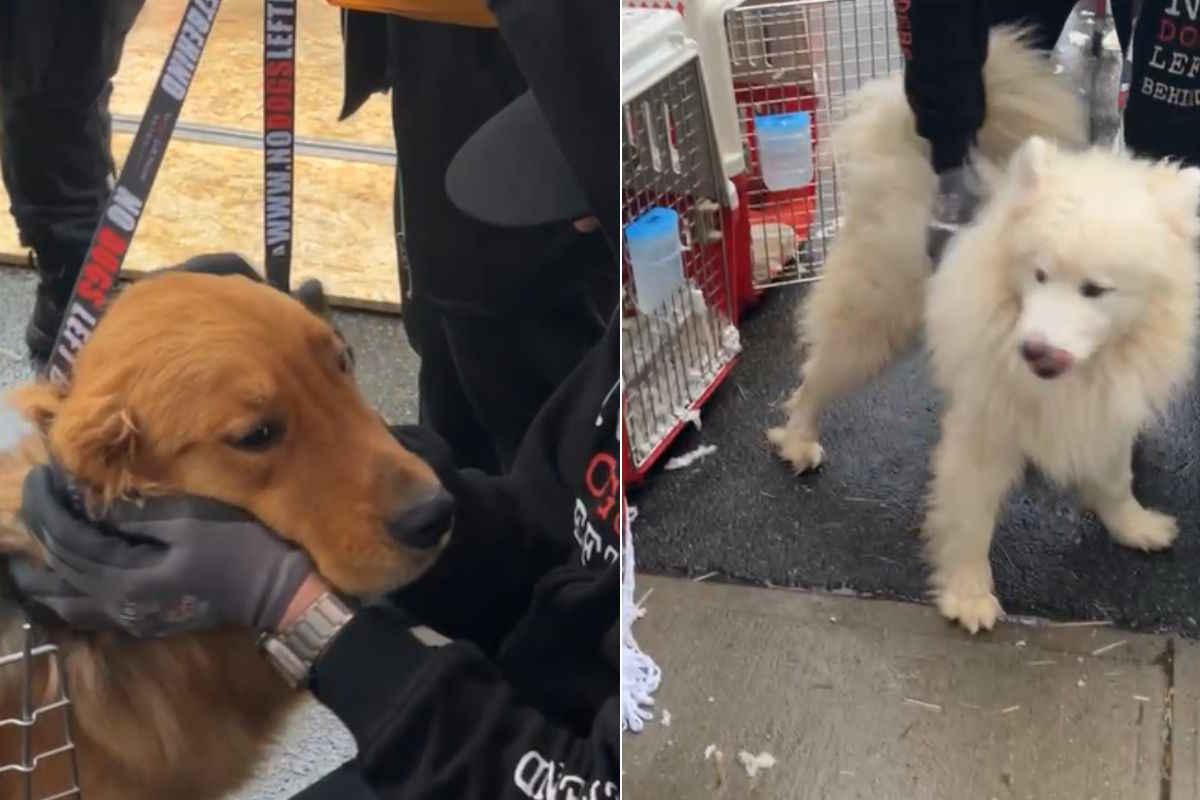Rescued and taken away from the horror of the slaughterhouses in China and Yulin: dozens of dogs, but also cats are now safe. The animals have arrived in the United States, where they will begin a new life

@No Dog Left Behind/Facebook
In a remarkable operation, over 50 animals including pedigree, mixed breed, and stray dogs, as well as two cats, have been saved from a grim fate. These animals, initially captured, stolen, or taken from street colonies, were destined for torture and slaughter for their meat. However, they will no longer face such a dire end as they are now safe.
The rescue was carried out by the association No Dog Left Behind, which operates in China to save animals fattened, mistreated, beaten, and even boiled alive, particularly during the ghastly Yulin Festival, and throughout the year.
Recently, the survivors arrived at John F. Kennedy International Airport in New York on what’s been called the flight of freedom. They were welcomed by volunteers, veterinarians, and operators ready to support these animals in the United States.
Following regular checks and receiving clearance for adoption, these animals will be placed in new homes. However, not all can be adopted immediately. Many are paralyzed with fear, having witnessed their peers being brutally slaughtered and hearing their pained cries.
They require time, peace, and understanding. Among them are large adult dogs and puppies, like a golden retriever who, with disoriented eyes, seeks comfort in the arms of a volunteer from the association.
No Dog Left Behind is looking for people willing to temporarily foster these animals, help them socialize, and adjust to a family environment without rush. Adoption is naturally the goal, aiming to provide these animals with the life they deserve.
Meanwhile, the association continues to intercept breeders and trucks full of dogs and cats destined for slaughterhouses. The process involves activists following the trucks from a distance and reporting cases to the authorities. Checks are conducted, and almost always, the animals are seized.
For breeders, the economic cost of reclaiming the animals is not worth it, as the penalties exceed the potential earnings from selling the meat of these dogs and cats. This is where associations step in to save them.
In addition to rescue operations, volunteers run informational campaigns aimed at raising awareness about the risks associated with consuming dog and cat meat and the cruelty involved. Change is happening, albeit slowly.
Less than 20% of Chinese people would oppose a ban to stop this slaughter once and for all. Other Asian countries, like South Korea, have recently decided to end the dog meat business.
The question remains: when will China and other countries, where consuming dog and cat meat is still seen as “tradition,” follow suit?
Source: No Dog Left Behind/Facebook

